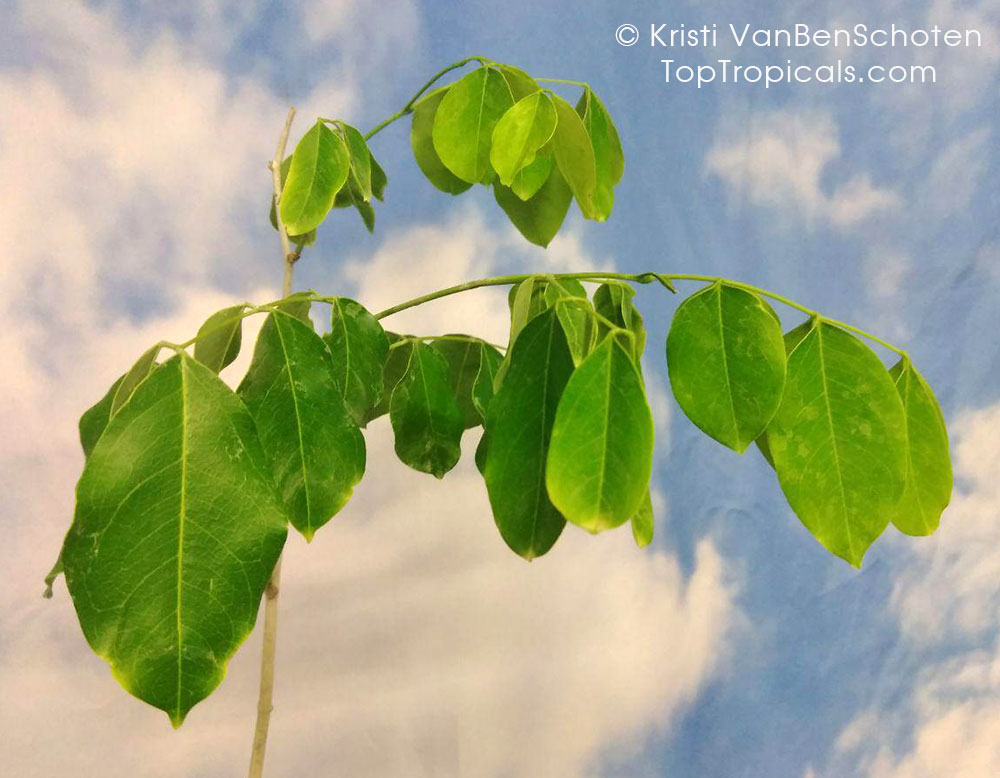Afzelia xylocarpa (Craib)
Top Tropicals Plant Encyclopedia
Botanical name: Afzelia xylocarpa
Common names: Craib, Makha Tree, Cambodia Beng Tree
Family: Fabaceae
Subfamily: Faboideae
Origin: Southeast Asia





Afzelia xylocarpa is easy to grow and is best suited for full sun and moderate water. The trees can tolerate drought, freezing temperatures, and a wide range of soil types. This species of tree requires moist, well-drained soil to thrive. It is not suitable for growing in pots in cold regions. The tree can grow in USDA hardiness Zone 9-11, and proper location and fertilization will keep it healthy and vibrant.
Afzelia xylocarpa is an unusual tree with its combination of broadleaf leaves and conifer-like bark with peeling stripes. The irregularly shaped leaves that turn yellow, yellow-green or yellow-gold in autumn make it an attractive choice for landscape design. Its large clusters of yellow-orange, seedpods up to 8 inches long are a striking contrast to the green of the tree.
The tree is traditionally used as an ethnomedical plant. The seed was traditionally used to treat diarrhea, dysentery, eye infections, and toothaches. In Cambodia, Afzelia xylocarpa (locally known as Beng) are planted as shading trees due to its wide-ranging branches. At roadsides and waterways, the tree provides a good wind barrier and protection from water-driven soil erosion.
